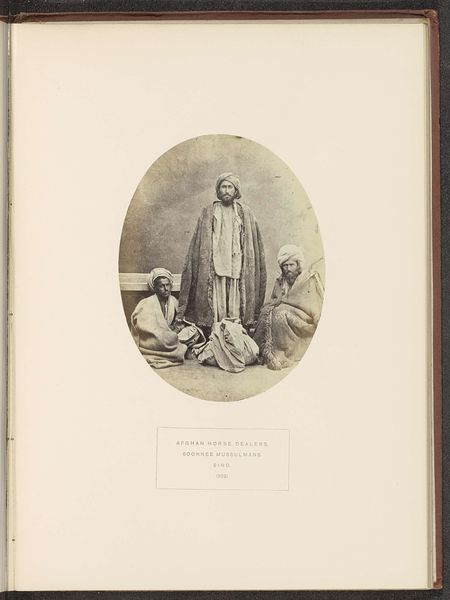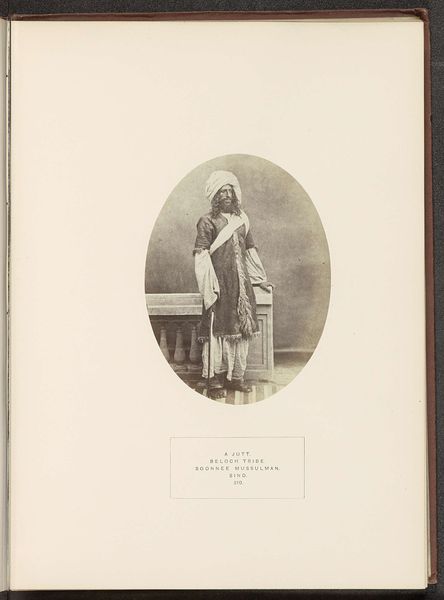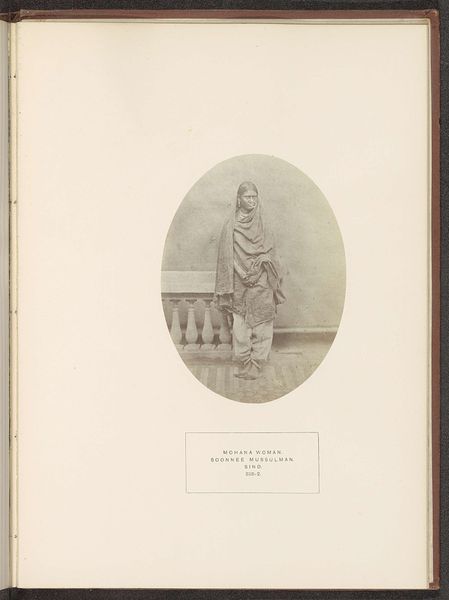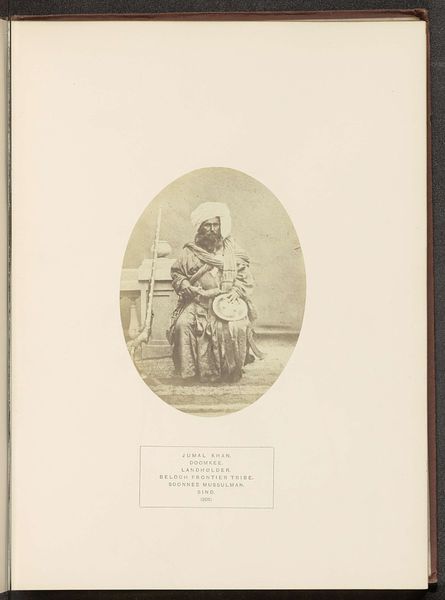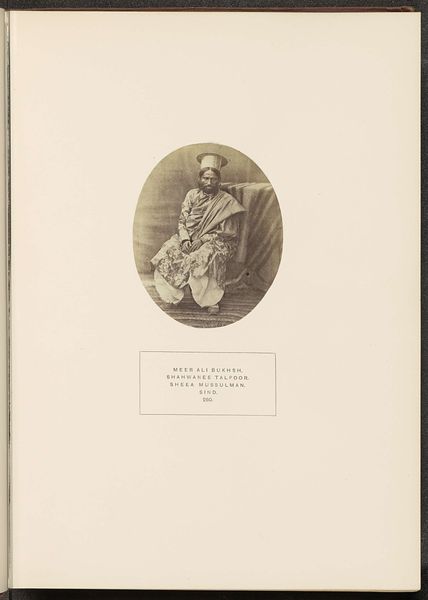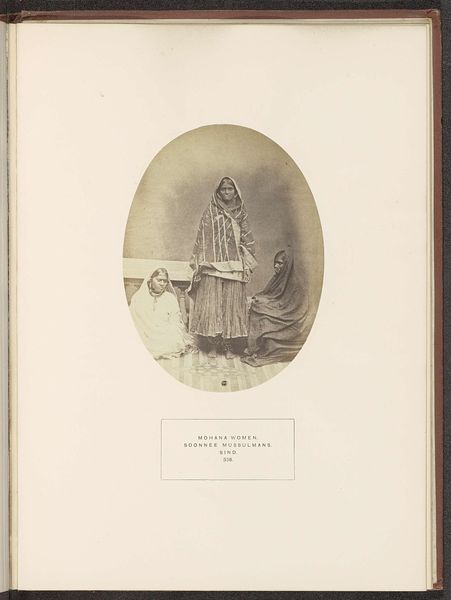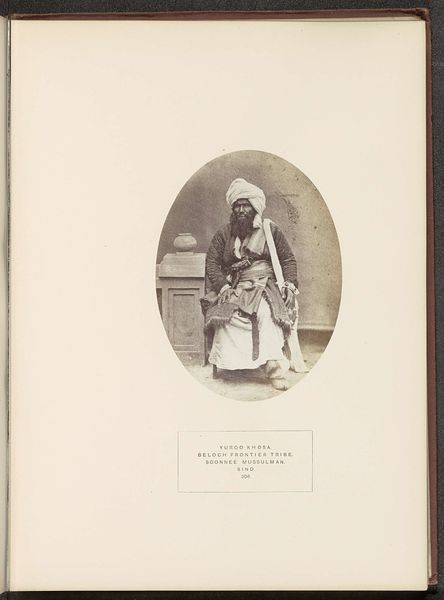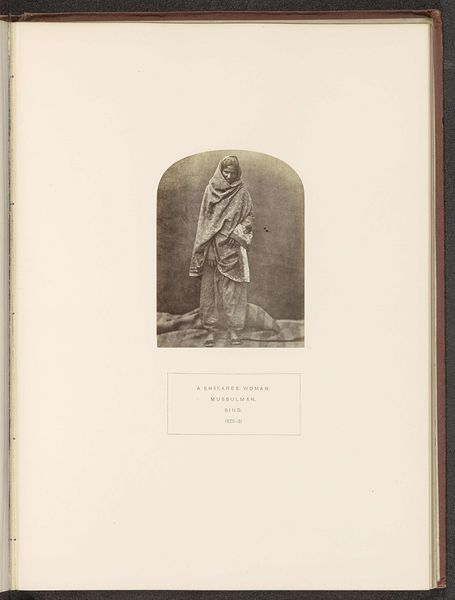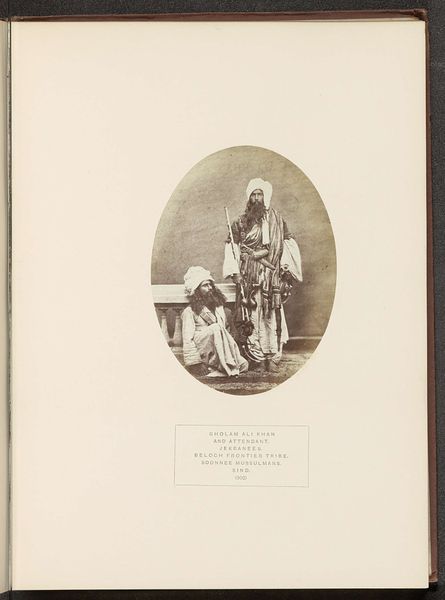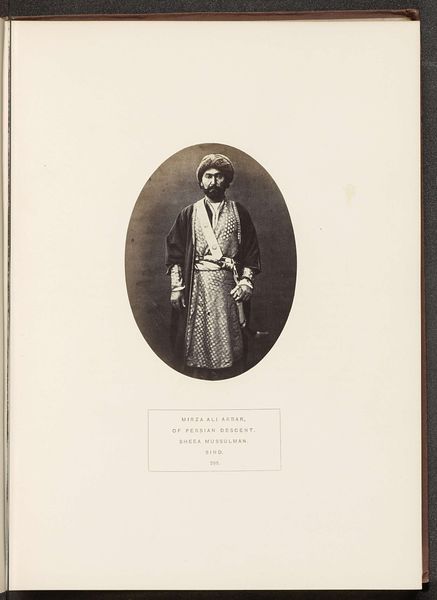
Portret van een onbekende verkoper van fruit uit Afghanistan before 1872
0:00
0:00
photography, gelatin-silver-print
#
portrait
#
african-art
#
photography
#
orientalism
#
gelatin-silver-print
#
realism
Dimensions: height 147 mm, width 108 mm
Copyright: Rijks Museum: Open Domain
Henry Charles Baskerville Tanner made this photograph of an unknown Afghan fruit seller in the 19th century. The image is a window into the visual culture of the British Raj in India, where Tanner worked as a photographer. The portrait is framed within an oval, a typical format for formal portraiture. However, instead of a dignitary or colonial official, Tanner focuses on a common vendor. What does it mean to cast such an anonymous figure in the visual language of power? The inscription beneath the photograph identifies him as an "Afghan Fruit Seller, Soonnee Mussulman," suggesting the image may have been created as part of a visual record of different "types" of people encountered in British India. This impulse was rooted in the colonial desire to classify and control populations. To understand the image better, we can consult colonial archives, ethnographic surveys, and postcolonial studies. By doing so, we can begin to understand the complex social and institutional context in which the photograph was made.
Comments
No comments
Be the first to comment and join the conversation on the ultimate creative platform.

